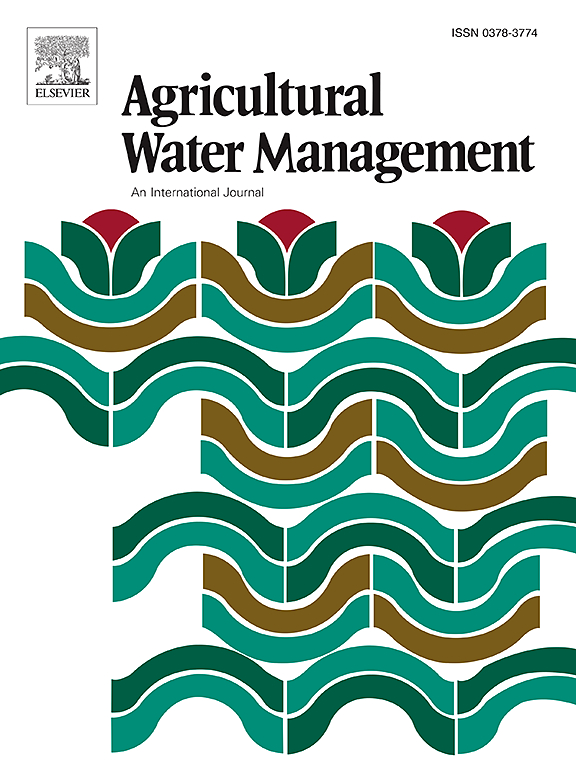Effect of soil thickness on crop production and nitrogen loss in sloping land
IF 5.9
1区 农林科学
Q1 AGRONOMY
引用次数: 0
Abstract
Soil thickness is a useful soil quality indicator. This study aimed to characterize the effects of soil thickness on crop yield and water and nitrogen loss in sloping land. A seven-year experiment was conducted in the purple soil sloping land of Southwest China, which included six soil thickness of 20, 40, 60, 80, 100 and 120 cm. The crop yield, surface runoff, leaching and nitrogen loss were measured. The results showed that the crop yield increased as soil thickness increased from 20 cm to 120 cm. Regression analysis showed that the yield of spring maize and summer maize plateaued when the soil thickness increased to 118 cm, and the yield of winter crops still increased with soil thickness when the soil thickness was more than 120 cm. The total runoff decreased as the soil thickness increased from 20 cm to 120 cm. The surface runoff, leaching and total runoff under 120 cm soil thickness were 50.4 %, 72.3 % and 65.8 % lower than those under 20 cm thickness. The nitrogen loss through leaching accounts for 97.5 % of the total nitrogen loss. The total nitrogen loss decreased with the increase of soil thickness, and the average annual total nitrogen loss in 20, 40, 60, 80, 100, 120 cm soil thickness were 36.6, 25.1, 21.5, 16.9, 10.5 and 7.2 kg ha−1, respectively. Regression analysis showed that the total runoff was efficiently reduced when soil thickness reached 160 cm, and the total nitrogen loss was efficiently reduced when soil thickness reached 140 cm. These critical soil thickness values provided references for the design of high-yield cropping systems and environment benefit evaluation in purple soil sloping land.
土壤厚度对坡地作物产量和氮损失的影响
土壤厚度是一个有用的土壤质量指标。本研究旨在描述土壤厚度对坡耕地作物产量和水氮损失的影响。在中国西南紫色土坡耕地进行了为期七年的试验,包括 20、40、60、80、100 和 120 厘米六种土层厚度。对作物产量、地表径流、淋失量和氮素流失量进行了测定。结果表明,随着土壤厚度从 20 厘米增加到 120 厘米,作物产量也随之增加。回归分析表明,当土壤厚度增加到 118 厘米时,春玉米和夏玉米的产量趋于平稳,而当土壤厚度超过 120 厘米时,冬季作物的产量仍随土壤厚度的增加而增加。土壤厚度从 20 厘米增加到 120 厘米时,总径流量减少。与 20 厘米的土壤厚度相比,120 厘米土壤厚度下的地表径流、淋溶径流和总径流分别减少了 50.4%、72.3% 和 65.8%。渗滤造成的氮损失占总氮损失的 97.5%。总氮损失量随土壤厚度的增加而减少,20、40、60、80、100 和 120 厘米土壤厚度下的年平均总氮损失量分别为 36.6、25.1、21.5、16.9、10.5 和 7.2 千克/公顷。回归分析表明,当土壤厚度达到 160 厘米时,总径流量可有效减少;当土壤厚度达到 140 厘米时,总氮损失可有效减少。这些临界土壤厚度值为紫色土坡耕地的高产种植系统设计和环境效益评估提供了参考。
本文章由计算机程序翻译,如有差异,请以英文原文为准。
求助全文
约1分钟内获得全文
求助全文
来源期刊

Agricultural Water Management
农林科学-农艺学
CiteScore
12.10
自引率
14.90%
发文量
648
审稿时长
4.9 months
期刊介绍:
Agricultural Water Management publishes papers of international significance relating to the science, economics, and policy of agricultural water management. In all cases, manuscripts must address implications and provide insight regarding agricultural water management.
 求助内容:
求助内容: 应助结果提醒方式:
应助结果提醒方式:


